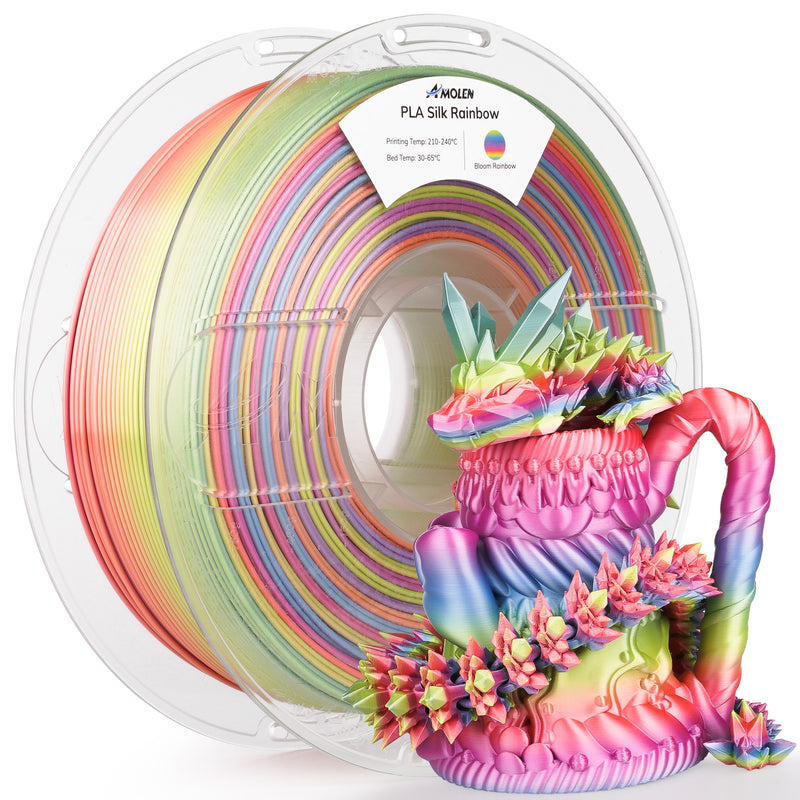Unlock the Secrets of Perfect Prints: Overcoming Common Silk PLA Challenges!
Silk PLA filament has surged in popularity among 3D printing enthusiasts for its stunning aesthetic qualities and unique properties. The filament boasts a glossy finish that gives prints an eye-catching sheen, making it ideal for decorative items, cosplay props, and artistic creations. However, while silk PLA can elevate your 3D printing projects to new heights, it also comes with its share of challenges. Many users, including some of my friends who’ve dabbled in 3D printing, have encountered various issues that can hinder their printing experience. Addressing these common challenges is essential for achieving perfect prints and maximizing the potential of silk PLA filament printing problems.

Understanding Silk PLA Filament
Silk PLA filament is a variation of standard PLA (Polylactic Acid) that incorporates additives to enhance its visual appearance and texture. The most notable difference is the filament's glossy finish, which results from the unique blend of materials used in its composition. This sheen not only makes prints look more refined but also adds a level of depth and dimension that standard PLA lacks. However, silk PLA is not without its challenges. While it is generally easy to print with, users may find that it requires specific settings and adjustments to achieve optimal results. Some advantages of using silk PLA include its vibrant colors and smooth surface finish, but drawbacks can include potential issues with layer adhesion and print stability, especially for complex designs.
Common Printing Problems with Silk PLA
When using silk PLA, several common printing problems can arise, which can affect the overall quality of your prints. Understanding these issues is the first step towards successfully overcoming them. Here are some of the typical challenges encountered:
- Layer adhesion problems
- Stringing and oozing
- Inconsistent surface finish
- Warping and curling
Layer Adhesion Issues
Poor layer adhesion is one of the most frustrating problems when working with silk PLA. This issue often manifests as layers that do not bond properly, leading to weak points in the print and potential failure. Several factors contribute to poor layer adhesion, including incorrect print temperature and speed settings. If the temperature is too low, the filament may not melt sufficiently to bond with the previous layer. Conversely, if the print speed is too high, the filament may not have enough time to adhere properly. To resolve these issues, try adjusting your print temperature upward by 5-10°F and reducing the print speed. It’s also beneficial to ensure proper bed leveling and use a suitable print surface to enhance adhesion.
Stringing and Oozing
Stringing and oozing are two related problems that can mar the appearance of your prints. These issues occur when molten filament oozes out of the nozzle during non-print moves, leaving behind unsightly strings or blobs. The primary causes of stringing include high printing temperatures and insufficient retraction settings. To minimize stringing, consider lowering your print temperature by 5-10°F to reduce the viscosity of the filament during idle moves. Additionally, fine-tuning your retraction settings—such as increasing the retraction distance and speed—can significantly reduce oozing. A friend of mine who prints intricate models found that adjusting these settings made a world of difference in the quality of his prints.
Inconsistent Surface Finish
An inconsistent surface finish can detract from the overall quality of your silk PLA prints. Factors like temperature fluctuations, inadequate cooling, and improper print speed can lead to uneven surfaces. To achieve a smooth finish, it’s essential to calibrate your printer’s temperature settings accurately. Start by printing temperature towers to find the optimal temperature for your filament. Additionally, adjusting your print speed can help; slower speeds may yield better results when printing intricate details. Implementing a cooling fan can also assist in maintaining a consistent finish, especially for overhangs and intricate designs.
Warping and Curling
Warping and curling are common issues when using silk PLA, particularly if the print is large or has a significant overhang. These problems can occur due to the filament cooling too quickly, causing it to shrink and pull away from the print bed. To combat warping, ensure that your print bed is properly prepared. Using adhesives like glue stick or painter’s tape can improve bed adhesion. Additionally, controlling the environment around your printer can help; maintaining a consistent temperature and reducing drafts can minimize these issues. I’ve seen friends successfully avoid warping by enclosing their printers in a cabinet or using a build plate with a heated surface.
Maximizing Your Silk PLA Printing Experience
Printing with silk PLA can be a rewarding experience, but it’s essential to understand the common challenges that can arise. By recognizing issues such as layer adhesion problems, stringing, inconsistent finishes, and warping, you can implement effective solutions to enhance your prints. Each of these challenges has specific strategies for resolution, allowing you to experiment and refine your 3D printing skills. As you continue to explore the capabilities of silk PLA, remember that practice makes perfect—don't hesitate to tweak settings and share your experiences with the community. Happy printing!







